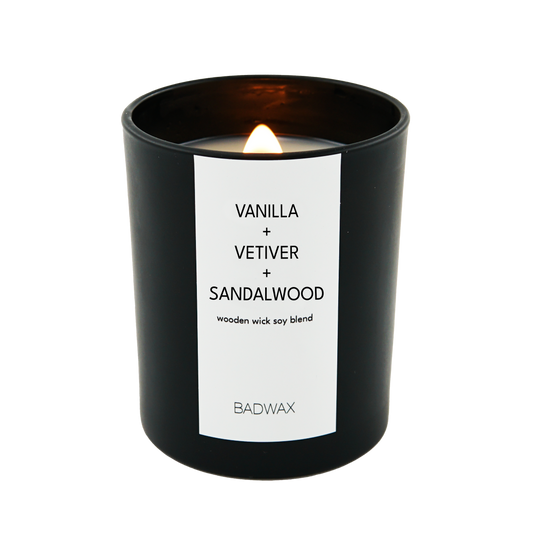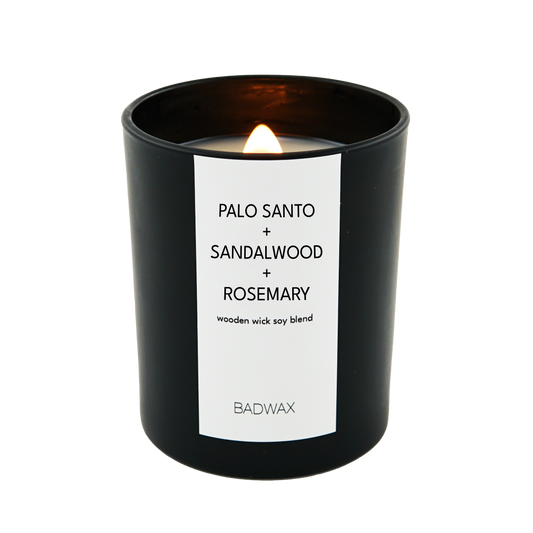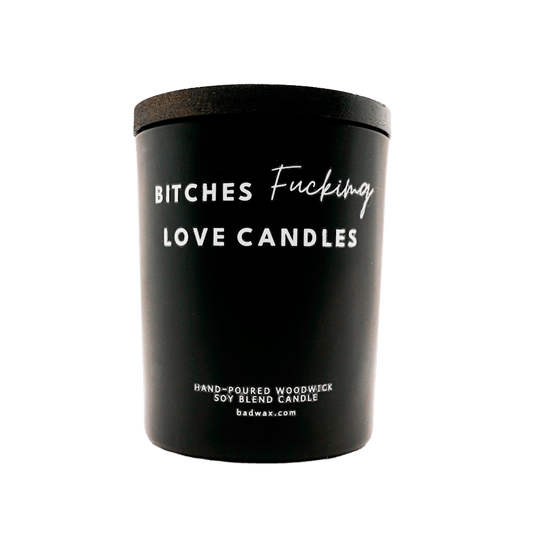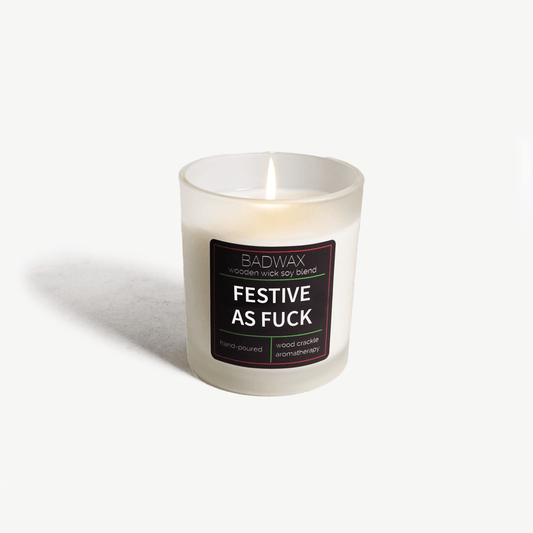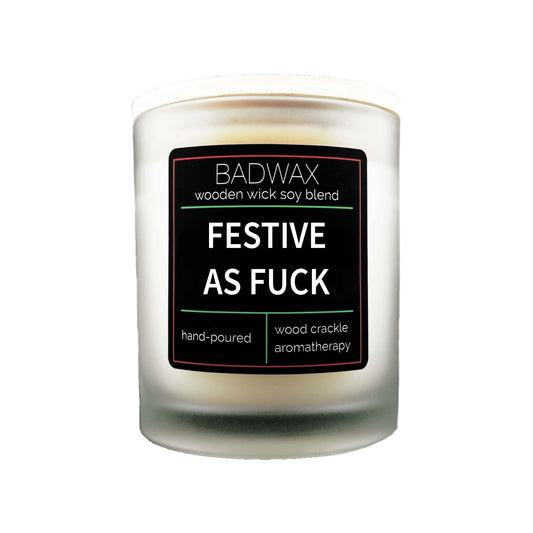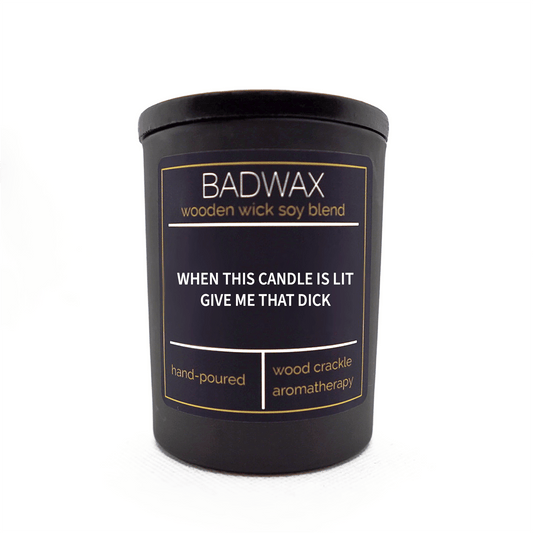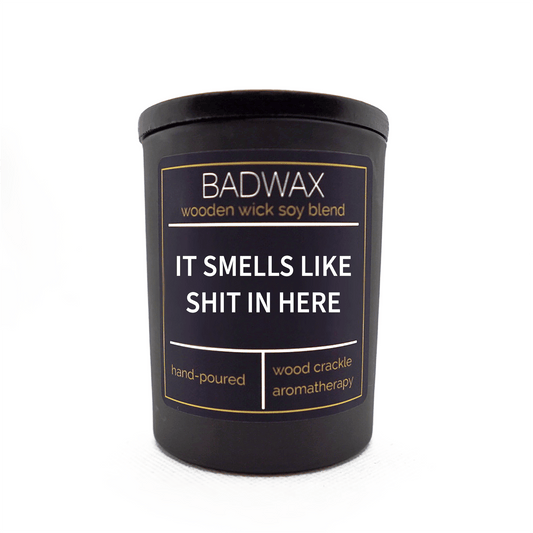When it comes to choosing the right candle, there's more to consider than just scent or aesthetics. One of the most important aspects is the type of wick. Recently, wood wick candles have grown in popularity, with claims that they offer a superior candle-burning experience. But are wood wick candles truly better than traditional cotton wicks?
In this article, we'll explore the benefits and drawbacks of wood wick candles, how they compare to cotton wick candles, and why you might want to consider making the switch.
What Are Wood Wick Candles?
Wood wick candles, as the name suggests, use a strip of wood instead of a cotton or hemp wick. These wooden wicks are typically made from sustainable hardwood, like cherry, maple, or birch. When lit, they produce a crackling sound, mimicking the soothing ambiance of a fireplace, which is one of the key features that sets them apart from traditional candles.
Benefits of Wood Wick Candles
There are several reasons why wood wick candles are gaining popularity, especially among candle enthusiasts. Here are some of the standout benefits:
-
Unique Crackling Sound: One of the main reasons people love wood wick candles is for the calming, crackling sound they produce when burned. This soft crackle creates a warm and inviting atmosphere, much like sitting next to a cozy fireplace. For those who appreciate multi-sensory experiences, this adds an extra layer of enjoyment.
-
Longer Burn Time: Wood wick candles tend to burn more slowly and evenly compared to cotton wicks. This is because the wider wooden wick creates a slower, more consistent melt pool, allowing the candle to last longer.
-
Clean Burn: Wood wicks generally produce less soot than traditional cotton wicks. This results in a cleaner burn, which is better for indoor air quality and reduces the chances of black residue accumulating on the walls or candle jar.
-
Eco-Friendly: Many wood wicks are made from sustainably sourced wood, making them an environmentally friendly option. Plus, they are often combined with natural waxes like soy or beeswax, further reducing the environmental impact.
-
Stronger Scent Throw: Wood wick candles often have a stronger and more even scent throw, thanks to their wider wick and larger melt pool. This means your room will fill with fragrance more quickly and consistently compared to cotton wick candles.
Drawbacks of Wood Wick Candles
While wood wick candles have many advantages, they also come with a few potential downsides. Here are some things to consider before making the switch:
-
More Expensive: Because of the high-quality materials and craftsmanship required, wood wick candles tend to be pricier than their cotton wick counterparts. If you’re on a budget, this may be something to keep in mind.
-
Harder to Light: Wood wicks can be a little more challenging to light than cotton wicks, especially if the wick isn’t trimmed properly. It may take a couple of attempts before the flame catches, and a longer lighter might be necessary to reach deeper wicks.
-
Requires Regular Maintenance: Just like with cotton wicks, it’s essential to trim wood wicks to about 1/8 inch before each burn. If the wick is too long, it may produce a weak flame, or worse, not light at all. Proper maintenance ensures an even and efficient burn.
-
Not Ideal for Small Candles: Wood wicks are wider than cotton wicks, meaning they require a larger surface area to burn effectively. In small candles or those with narrow containers, a wood wick may not burn as well or may even drown in the melt pool, making it harder to maintain a consistent flame.
How Do Wood Wick Candles Compare to Cotton Wick Candles?
Cotton wick candles have been the standard for decades and are still a popular choice for many candle users. While they are often less expensive and easier to find, they lack some of the benefits that wood wick candles offer.
-
Burn Time: As mentioned, wood wick candles typically have a longer burn time due to their slow, even burn. Cotton wick candles may burn faster, requiring you to replace them more often.
-
Aesthetics and Sound: While cotton wick candles provide a steady flame, they don’t offer the cozy crackling sound of a wood wick candle. If ambiance is important to you, the subtle crackle of a wood wick candle can make all the difference.
-
Scent Throw: Cotton wicks often have a lighter scent throw compared to wood wicks, especially in larger rooms. If you prefer a more powerful scent, wood wick candles may be the better option.
-
Maintenance: Both types of wicks require trimming before burning, but cotton wicks tend to be more forgiving when it comes to lighting and keeping a steady flame.
Are Wood Wick Candles Better for the Environment?
Wood wick candles often get extra points for being eco-friendly. Most are made from sustainably sourced wood, and many come with natural, non-toxic waxes like soy, coconut, or beeswax. In contrast, traditional cotton wicks may be made with bleached or chemically treated cotton, which can release toxins when burned.
If reducing your environmental footprint is important, choosing wood wick candles made from sustainable sources is a better choice. Just make sure to check the label to ensure both the wick and wax are eco-friendly.
Final Thoughts: Are Wood Wick Candles Better?
So, are wood wick candles better? The answer depends on what you're looking for in a candle. If you enjoy a long-lasting, clean-burning candle with a stronger scent and love the calming crackle of a wood fire, wood wick candles are definitely worth trying. They may require a bit more maintenance and can be a bit pricier, but the overall experience they provide can be well worth the investment.
However, if you're looking for an affordable, easy-to-use candle and don't mind sacrificing the crackle and longer burn time, traditional cotton wick candles may still suit your needs just fine.
Ultimately, both types of candles have their pros and cons, and the best choice comes down to personal preference. Whether you choose a wood wick or cotton wick, there's no denying the magic a candle brings to any space.






